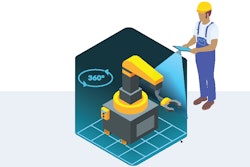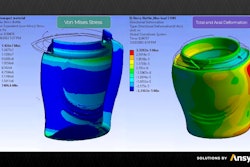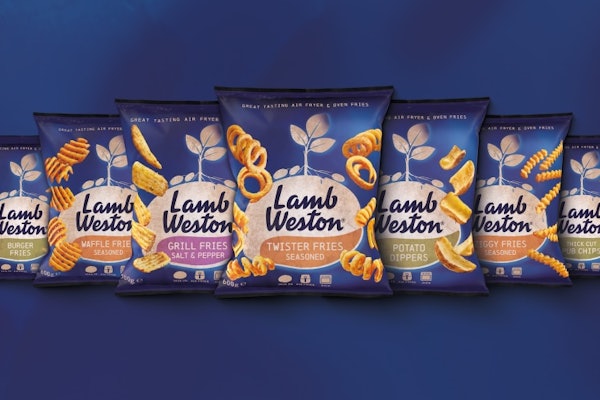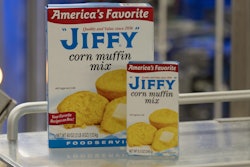Packaging World columnists have made some bold predictions that have come to pass at a high clip. Our resident legal eagle Eric Greenberg reminded me of his now-validated prediction last month after the Supreme Court ruled on a case that shook continued adherence to the 1984 “Chevron” doctrine that grants deference to agencies like FDA and EPA. Greenberg presciently wrote about the topic almost a year prior. Good call, counselor. But I’m not sure I like the sound of your prediction about fallout from the decision: “…if the common prediction is correct that the doctrine will be undone, be ready next year for a rupture in the foundation of our regulatory system, and a huge increase in unpredictability,” he said then.
Just a few days later, on the 50th Anniversary of the Global Trade Item Number (GTIN) barcode’s first “beep” at a checkout counter, I sent an e-newsletter blast about data standardization body GS1’s Sunrise 2027. That project aims to replace the venerable but dated GTIN with 2D data matrices or QR codes on labels or packages. These codes not only make the products go beep at checkout, but also connect the consumer to the brand via website and have all sorts of behind the scenes advantages for supply chains and consumer behavior insight gleaning for brands who employ them. Not long after sending that email, I received a response from Dr. Bruce Welt at the University of Florida, directing me to a crystal ball prediction of his own. In a column written way back in 2008, Dr. Welt predicted the dawn of 2D data matrices as the dominant form of on-pack information relation and connection. “Vision systems coupled with a variety of identification symbologies, such as 2D data matrix barcodes, offer the ability to realize virtually all of the benefits promised by RFID, but with much lower cost, complexity, and environmental impact,” he said 16 years ago. Today, Welt’s putting his chips on regenerative robust gasification of waste that produces several packaging feedstocks, and has recently been following a promising new pathway from methanol to PET.
This unusual two-fer of predictions coming true got me thinking about other examples of when columnists had picked winning horses. As I write this, I’ve only been back for a month from the massive drupa expo, where package printing was huge (more on digital printing here). One of my first stops was to visit Yarden Ben-Dor at the expansive Landa booth, where carton- and paperboard-printing S11 nanographic presses roared to life every half hour. Landa now has more than 60 commercial nanographic presses in the market, but that hadn’t always been the case. Founded in 2003 by Benny Landa, the defacto “father of digital printing” who had previously founded Indigo (now HP Indigo) in 1977, nanographic printing is a plate-free but ultra-high-quality nascent digital printing tech that took a surprisingly long time to find its in-market footing. The first U.S. installation of a Landa nanographic press was 2018.
One of the earlier champions of this finally emergent tech, though, was none other than my predecessor, Pat Reynolds. In 2013, we heard from him even then awaiting the first commercialized project for the already decade-old company. “The first commercial user of Landa’s S10FC nanographic press is expected to be in production with folding cartons in Q4 of 2014. ‘The opportunities for conversion to digital are enormous,’ said Landa at the press briefing. Many of those opportunities, he added, are in packaging, where inventories can be minimized, packaging can be personalized, and the cost of printing can be reduced.”
The pandemic produced a spate of predictions, including some by PW editorial advisory board member Brian Stepowany of B&G Foods (Green Giant). He made four distinct calls about supply chains and co-man/co-packing reliance as early as July 2020: 1. Secondary sourcing will become critical. 2. Speed-to-market will prioritize larger production runs. 3. Attention to the “unboxing experience” will drive opportunities. 4. Service providers will thrive running new packaging innovations. Brian wrote another column three years later to grade his predictive powers. Spoiler alert—his predictions were right on the money.
I’ve been bullish on smart packaging’s ability to prevent food waste and reap upstream supply chain benefits that affect brands’ bottom lines. The same tech should also have downstream benefits for material recovery and recycling in projects like HolyGrail 2.0. Meanwhile, AI-based sortation of packaging and learning about packaging hold a lot of promise for creating more and better bales of PCR feedstock. We’ll see how accurate those picks are, but I like my chances. PW



























